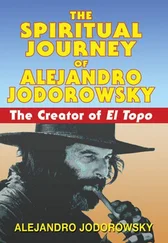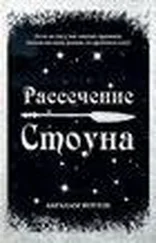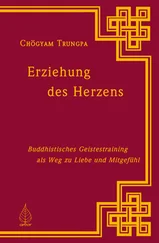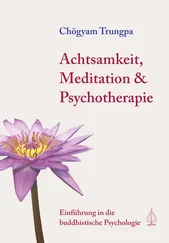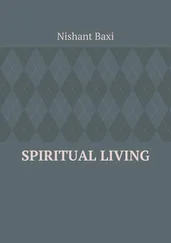Chögyam Trungpa - Cutting Through Spiritual Materialism
Здесь есть возможность читать онлайн «Chögyam Trungpa - Cutting Through Spiritual Materialism» весь текст электронной книги совершенно бесплатно (целиком полную версию без сокращений). В некоторых случаях можно слушать аудио, скачать через торрент в формате fb2 и присутствует краткое содержание. Город: Boston & London, Год выпуска: 2002, ISBN: 2002, Издательство: Shambhala Publications, Inc., Жанр: Религиоведение, Религия, на английском языке. Описание произведения, (предисловие) а так же отзывы посетителей доступны на портале библиотеки ЛибКат.
- Название:Cutting Through Spiritual Materialism
- Автор:
- Издательство:Shambhala Publications, Inc.
- Жанр:
- Год:2002
- Город:Boston & London
- ISBN:0-87773—050—4
- Рейтинг книги:5 / 5. Голосов: 1
-
Избранное:Добавить в избранное
- Отзывы:
-
Ваша оценка:
- 100
- 1
- 2
- 3
- 4
- 5
Cutting Through Spiritual Materialism: краткое содержание, описание и аннотация
Предлагаем к чтению аннотацию, описание, краткое содержание или предисловие (зависит от того, что написал сам автор книги «Cutting Through Spiritual Materialism»). Если вы не нашли необходимую информацию о книге — напишите в комментариях, мы постараемся отыскать её.
Cutting Through Spiritual Materialism — читать онлайн бесплатно полную книгу (весь текст) целиком
Ниже представлен текст книги, разбитый по страницам. Система сохранения места последней прочитанной страницы, позволяет с удобством читать онлайн бесплатно книгу «Cutting Through Spiritual Materialism», без необходимости каждый раз заново искать на чём Вы остановились. Поставьте закладку, и сможете в любой момент перейти на страницу, на которой закончили чтение.
Интервал:
Закладка:
Tantric teaching surpasses the “looking beyond” bias of the transcendental attitude that “form is form.” When we speak of transcendence in the Mahayana tradition, we mean transcendence of ego. In the Tantric tradition we do not speak of going beyond ego at all: it is too dualistic an attitude. Tantra is much more precise than that. It is not a question of “getting there ” or “being there ”; the Tantric tradition speaks of being here . It speaks of transmutation and the analogy of alchemistic practice is used a great deal. For example, the existence of lead is not rejected but lead is transmuted into gold. You do not have to change its metallic quality at all; you must simply transmute it.
Tantra is synonymous with dharma, the path. The function of Tantric practice is to transmute ego, enabling the primordial intelligence to shine through. The word tantra means “continuity.” It is like the thread which strings beads together. The thread is the path. The beads are the working basis of Tantric practice: that is, the Five Skandhas or the five constituents of ego as well as the primordial potential of the Buddha within oneself, the primordial intelligence.
Tantric wisdom brings nirvana into samsara. This may sound rather shocking. Before reaching the level of Tantra, you try to abandon samsara and strive to achieve nirvana. But eventually you must realize the futility of striving and then become completely one with nirvana. In order to really capture the energy of nirvana and become one with it you need a partnership with the ordinary world. Therefore the term “ordinary wisdom,” thamal-gyi-shepa , is used a great deal in the Tantric tradition. It is the completely ordinary version of “form is form, emptiness is empty”; it is what is. One cannot reject the physical existence of the world as being something had and associated with samsara. You can only understand the essence of nirvana by looking into the essence of samsara. Thus the path involves something more than simply going beyond duality, something more than mere non-dualistic understanding. You are able to see the “non-dualisticness,” so to speak, the “isness” quality of non-duality. You see beyond the negation aspect of shunyata, the negation of duality. Therefore, the term “shunyata” is not used very much in Tantra. In Tantric tradition tathata, “what is,” is used, rather than “shunyata” or “emptiness.” The word ösel (Tibetan) or prabhasvara (Sanskrit), which means “luminosity,” is also used a lot rather than “shunyata.” You find this reference to the Tantric tradition in the Buddha’s last turning of the Wheel of Dharma: instead of saying, “Form is empty, emptiness is form,” and so on, he says that form is luminous. Luminosity or prabhasvara is connected with mahasukha , the “great joy” or “bliss,” the full realization that “emptiness is emptiness.” It is not empty simply because form is also form.
The dynamic quality of energy is not expressed enough in the doctrine of shunyata because the whole discovery of shunyata derives its meaning relative to samsaric mind. Shunyata offers an alternative to samsara and so the teaching of shunyata is directed toward the samsaric mentality. Even if this teaching goes beyond saying that “form is empty and emptiness is form” to say that “emptiness is no other than form” and “form is no other than emptiness,” still it does not go so far as to say that form has this energy and emptiness has this energy. In the Vajrayana or Tantric teaching the principle of energy plays a very important part.
The teaching must connect with the day to day lives of its practitioners. We are confronted with the thoughts, emotions and energies of our relationships with other people and the world. How are we going to relate our understanding of shunyata to everyday events unless we recognize the energy aspect of life? If we cannot dance with life’s energies, we will not be able to use our experience of shunyata to unite samsara and nirvana. Tantra teaches not to suppress or destroy energy but to transmute it; in other words, go with the pattern of energy. When we find balance going with the energy, we begin to get acquainted with it. We begin to find the right path with the right direction. This does not mean that a person has to become a drunken elephant, a wild yogi in the pejorative sense.
A perfect example of going with energy, of the positive wild yogi quality, was the actual transmission of enlightenment from Tilopa to Naropa. Tilopa removed his sandal and slapped Naropa in the face. He used the situation of the moment, Naropa’s energy of curiosity and seeking, transmuting it into the awakened state. Naropa had tremendous energy and intelligence, but his energy was not related to Tilopa’s understanding, to his openness of mind, which was another kind of energy. In order to penetrate this barrier a sudden jolt was needed, a shock which was not artificial. It is like a crooked building which is just about to fall down but is straightened suddenly, accidentally, by an earthquake. Natural circumstances are used to restore the original state of openness. When one goes with the pattern of energy, then experience becomes very creative. The energy of wisdom and compassion is continually operating in a precise and accurate way.
As the yogi becomes more sensitive to the patterns and qualities of energy, he sees more clearly the meaning or symbolism in life experiences. The first half of Tantric practice, the Lower Tantra, is called Mahamudra, which means “Great Symbol.” Symbol, in this sense, is not a “sign” representing some philosophical or religious principle; it is the demonstration of the living qualities of what is. For instance, in the direct perception of a flower, the perception of naked insight, unclothed and unmasked, the color of the flower conveys a message over and beyond the simple perception of color. There is great meaning in this color, which is communicated in a powerful, almost overwhelming way. Conceptualized mind is not involved in the perception and so we are able to see with great precision, as though a veil had been removed from before our eyes.
Or if we hold a piece of rock in our hands with that clarity of perception which is the direct contact of naked insight, we not only feel the solidity of that one rock, but we also begin to perceive the spiritual implications of it; we experience it as an absolute expression of the solidity and majesty of earth. In fact we could be holding Mount Everest in our hands, as far as the recognition of fundamental solidity is concerned. That small rock represents every aspect of solidness. I do not mean this in the physical sense alone; but I am speaking of solidity in the spiritual sense, the solidity of peace and energy, indestructible energy. The yogi feels the solidity and forbearance of earth—whatever you plant or bury in it, the earth never reacts against it. In this rock he is aware of the enlightened Wisdom of Equanimity as well as the samsaric quality of ego-pride which wants to build a high pyramid or monument to its own existence. Every situation we encounter has this vivid connection with our state of being. It is interesting to note that in the Tantric iconography a number of symbolic figures are shown holding a mountain in one hand, which represents exactly what we have been discussing: solid peace, solid compassion, solid wisdom which cannot be influenced by the frivolity of ego.
Every texture we perceive has some spiritual implication automatically, and we begin to realize the tremendous energy contained within this discovery and understanding. The meditator develops new depths of insight through direct communication with the reality of the phenomenal world. He is able to see not only the absence of complexity, the absence of duality, but the stoneness of stone and the waterness of water. He sees things precisely as they are, not merely in the physical sense, but with awareness of their spiritual significance. Everything he sees is an expression of spiritual. discovery. There is a vast understanding of symbolism and a vast understanding of energy. Whatever the situation, he no longer has to force results. Life flows around him. This is the basic mandala principle. The mandala is generally depicted as a circle which revolves around a center, which signifies that everything around you becomes part of your awareness, the whole sphere expressing the vivid reality of life. The only way to experience things truly, fully, and properly is through the practice of meditation, creating a direct link with nature, with life, with all situations. When we speak of being highly developed spiritually, this does not mean that we float in the air. In fact, the higher we go, the more we come down to earth.
Читать дальшеИнтервал:
Закладка:
Похожие книги на «Cutting Through Spiritual Materialism»
Представляем Вашему вниманию похожие книги на «Cutting Through Spiritual Materialism» списком для выбора. Мы отобрали схожую по названию и смыслу литературу в надежде предоставить читателям больше вариантов отыскать новые, интересные, ещё непрочитанные произведения.
Обсуждение, отзывы о книге «Cutting Through Spiritual Materialism» и просто собственные мнения читателей. Оставьте ваши комментарии, напишите, что Вы думаете о произведении, его смысле или главных героях. Укажите что конкретно понравилось, а что нет, и почему Вы так считаете.

